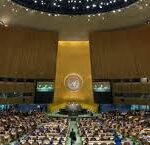Puerto Rico, a self-governing island commonwealth of the West Indies, is intricately associated with the United States. Situated in the northeastern Caribbean Sea, Puerto Rico boasts a rich tapestry of culture, history, and natural beauty. Join us as we delve into the captivating allure of this enchanting island, exploring its geography, culture, climate, and more.
Geography of Puerto Rico
Puerto Rico’s landscape is largely defined by its mountainous and hilly terrain, where nearly one-fourth of the island is adorned with steep slopes. The island’s topography is characterized by the Cordillera Central, the highest mountain range, which trends east-west and reaches elevations exceeding 3,000 feet in many areas. Cerro de Punta, towering at about 4,390 feet, proudly stands as the island’s highest peak. The Sierra de Luquillo, near the eastern tip, offers breathtaking vistas, culminating at El Yunque Peak, which rises to 3,494 feet. Beyond its majestic mountains, Puerto Rico boasts stunning coastal landscapes. The north coast features a continuous but narrow lowland, densely populated and vibrant with life. In contrast, the south and west coasts offer smaller bands of lowland, adorned with picturesque beaches and bustling communities. Islands like Mona, Vieques, and Culebra, though hilly, flaunt narrow coastal plains, adding to the island’s diverse coastal charm.
Climate of Puerto Rico
Puerto Rico enjoys a tropical climate with minimal seasonal variation, offering warm temperatures year-round. However, local conditions vary based on elevation and exposure to prevailing winds. The northeast trade winds bring heavy rainfall to the north coast, fostering lush greenery and vibrant ecosystems. Conversely, the south coast experiences a rain shadow effect, resulting in drier conditions. Rainfall is abundant throughout the year, with the heaviest precipitation occurring between May and December. As with many tropical regions, Puerto Rico is susceptible to hurricanes, which typically develop between June and November. These powerful storms can traverse the island, sometimes causing significant damage. Historical hurricanes, such as those in 1899, 1928, and more recently in 2017, serve as poignant reminders of the island’s vulnerability to these natural phenomena.
Read More: 25 July in Indian and World History
Flora and Fauna of Puerto Rico
Puerto Rico’s flora is as diverse as its terrain, with tropical rainforests adorning the north side of the island and thorn and scrub vegetation dominating the drier south side. While much of the island’s original vegetation was depleted due to agricultural exploitation, efforts to replant and preserve have led to a resurgence of greenery. The Caribbean National Forest, nestled in the Sierra de Luquillo, is a testament to Puerto Rico’s commitment to preserving its natural heritage, harboring rare species of orchids and the iconic Puerto Rican parrot. The island’s fauna is equally captivating, albeit more modest in diversity. Nonpoisonous snakes, lizards, mongooses, and the beloved coquí frog, known for its distinctive call, inhabit the island’s diverse ecosystems. The surrounding waters teem with a myriad of fish species, though commercial fishing is limited due to the mingling of edible and inedible species.
Puerto Rico stands as a testament to the harmonious coexistence of natural beauty, cultural heritage, and modernity. From its towering mountains to its pristine beaches, the island beckons travelers to explore its enchanting landscapes and immerse themselves in its rich tapestry of history and culture. Whether you seek adventure in the mountains, relaxation on the beaches, or culinary delights in the cities, Puerto Rico offers a treasure trove of experiences waiting to be discovered.
Let us embark on a journey to uncover the hidden gems of Puerto Rico and forge unforgettable memories amidst its splendor. Join us as we celebrate the allure of this Caribbean gem and discover the enchantment of Puerto Rico.












